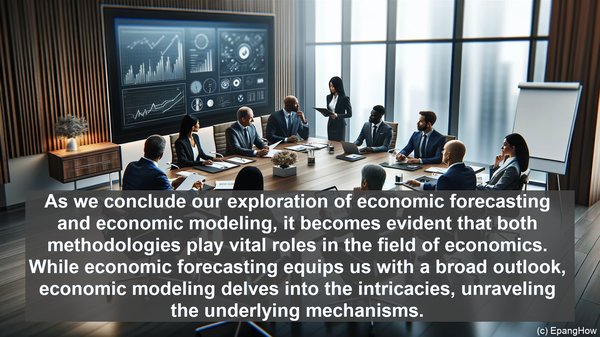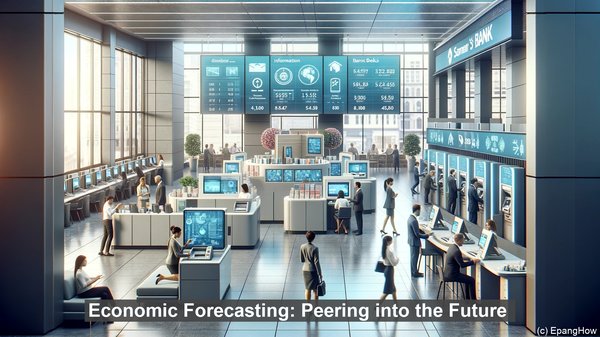Introduction: The Art of Predicting Economic Trends
Hello everyone! Welcome to today’s discussion on the intriguing world of economic forecasting and economic modeling. In the ever-changing landscape of economics, the ability to predict and understand trends is of paramount importance. It not only aids policymakers but also guides businesses and individuals in making informed decisions. So, let’s begin our exploration by understanding the fundamental distinction between economic forecasting and economic modeling.
Economic Forecasting: Peering into the Future
Economic forecasting, as the name suggests, is the process of making predictions about future economic conditions. It involves analyzing historical data, current trends, and a range of variables to estimate the likely trajectory of various economic indicators. These indicators can include GDP growth, inflation rates, employment figures, and more. The aim of economic forecasting is to provide a broad outlook, enabling stakeholders to anticipate potential scenarios and plan accordingly.
The Tools of Economic Forecasting
To accomplish its objectives, economic forecasting relies on a variety of tools and techniques. Time series analysis, for instance, examines data points collected over time to identify patterns and trends. This method is particularly useful when dealing with variables that exhibit seasonality or cyclical behavior. Another commonly employed approach is regression analysis, which seeks to establish relationships between different economic factors. By understanding these relationships, forecasters can make more accurate predictions.

The Limitations of Economic Forecasting
While economic forecasting is undoubtedly valuable, it is not without its limitations. The complexity of economic systems, coupled with the influence of external factors, can make accurate predictions challenging. For example, unforeseen events such as natural disasters or geopolitical tensions can significantly disrupt economic patterns. Additionally, the accuracy of forecasts tends to diminish the further into the future one looks. Nevertheless, despite these challenges, economic forecasting remains an indispensable tool in the economist’s arsenal.
Economic Modeling: Unraveling the Complexities
In contrast to economic forecasting, economic modeling focuses on understanding the underlying mechanisms and relationships within an economic system. It involves constructing mathematical or computational models that simulate the behavior of various economic variables. These models are built based on a set of assumptions and can range from simple equations to complex systems of equations. By running simulations and experiments, economists gain insights into how different factors interact and influence outcomes.
The Versatility of Economic Models
One of the key advantages of economic modeling is its versatility. Models can be tailored to address specific questions or scenarios, making them highly adaptable. For instance, a model may be designed to explore the potential impact of a policy change, such as a tax reform. By inputting relevant data and running simulations, economists can gauge the likely consequences and weigh the trade-offs. This information is invaluable for policymakers, as it helps them make evidence-based decisions.
The Challenge of Building Accurate Models
Constructing an economic model that accurately reflects the real world is no easy feat. Economies are complex, dynamic systems, influenced by a multitude of factors. Models must take into account these complexities while maintaining a balance between accuracy and simplicity. Additionally, the assumptions made during the model’s construction can have a significant impact on the outcomes. Sensitivity analysis, which involves testing the model’s response to changes in assumptions, is a crucial step in ensuring its robustness.
The Synergy between Forecasting and Modeling
While economic forecasting and economic modeling may seem distinct, they are not mutually exclusive. In fact, they often complement each other. Economic models can provide the foundation for forecasts, offering insights into the relationships between variables. Conversely, forecasts can validate or refine existing models, helping economists improve their accuracy. This synergy between the two methodologies strengthens the economist’s ability to understand and predict economic phenomena.

